|
Books Should Be Free Loyal Books Free Public Domain Audiobooks & eBook Downloads |
|
|
Books Should Be Free Loyal Books Free Public Domain Audiobooks & eBook Downloads |
|
Historical Fiction |
|---|
|
Book type:
Sort by:
View by:
|
By: William Henry Pope Jarvis (1876-1944) | |
|---|---|
 The Great Gold Rush: A Tale of the Klondike
The Great Gold Rush: A Tale of the Klondike
Canadian journalist William Jarvis' gently fictionalized work recounts many of the countless fascinating tales of the Klondike Gold Rush in Canada's Yukon. (Introduction by Cathy Barratt) | |
By: William Wells Brown (1814-1884) | |
|---|---|
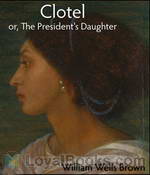 Clotel, or, The President's Daughter
Clotel, or, The President's Daughter
Clotel; or, The President's Daughter is a novel by William Wells Brown (1815-84), a fugitive from slavery and abolitionist and was published in London, England in December 1853. It is often considered the first African-American novel. This novel focuses on the difficult lives of mulattoes in America and the "degraded and immoral condition of the relation of master and slave in the USA" (Brown). It is about the tragic lives of Currer, Althesea, and Clotel. In the novel, Currer is the former mulatto mistress of President Thomas Jefferson who together have two daughters, Althesea and Clotel... | |
By: Émile Gaboriau (1832-1873) | |
|---|---|
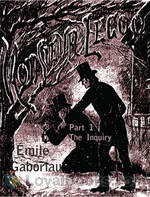 Monsieur Lecoq: The Inquiry
Monsieur Lecoq: The Inquiry
Monsieur Lecoq is a captivating mystery, historical and love story : Around 11 o'clock, on the evening of Shrove Sunday 18.., close to the old Barrière d'Italie, frightful cries, coming from Mother Chupin's drinking-shop, are heard by a party of detectives led by Inspector Gévrol. The squad runs up to it. A triple murder has just been committed. The murderer is caught on the premises. Despite Gévrol's opinion that four scoundrels encountered each other in this vile den, that they began to quarrel, that one of them had a revolver and killed the others, Lecoq, a young police agent, suspects a great mystery... | |
By: Agnes C. Laut (1871-1936) | |
|---|---|
 Lords of the North
Lords of the North
| |
 Heralds of Empire Being the Story of One Ramsay Stanhope, Lieutenant to Pierre Radisson in the Northern Fur Trade
Heralds of Empire Being the Story of One Ramsay Stanhope, Lieutenant to Pierre Radisson in the Northern Fur Trade
| |
By: William Carleton (1794-1869) | |
|---|---|
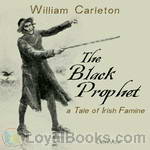 The Black Prophet - A Tale of Irish Famine
The Black Prophet - A Tale of Irish Famine
A story about the Irish, just before the onset of the famine of 1847, with all the color and dialogue of a man who lived it. | |
By: Henry Lawson (1867-1922) | |
|---|---|
 Joe Wilson and His Mates
Joe Wilson and His Mates
| |
By: Harold L. Goodwin (1914-1990) | |
|---|---|
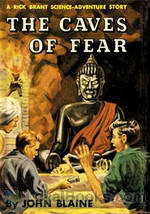 Caves of Fear
Caves of Fear
Entry in the Rick Brant series by Goodwin under the name John Blaine, which began in 1947. 'Rick and Scotty travel to the Himalayas again, this time to stop nuclear materials from falling into the wrong hands.' says Wikipedia. | |
By: Charles Alexander Eastman (1858-1939) | |
|---|---|
 Indian Child Life
Indian Child Life
The author was raised as an American Indian and describes what it was like to be an Indian boy (the first 7 chapters) and an Indian Girl (the last 7 chapters). This is very different from the slanted way the white man tried to picture them as 'savages' and 'brutes.'Quote: Dear Children:—You will like to know that the man who wrote these true stories is himself one of the people he describes so pleasantly and so lovingly for you. He hopes that when you have finished this book, the Indians will seem to you very real and very friendly... | |
By: H. C. Bailey (1878-1961) | |
|---|---|
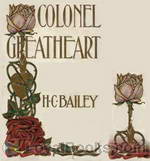 Colonel Greatheart
Colonel Greatheart
This is an unusual story of the English Civil War. There is a good account of the Battle of Newbury, and many historic figures appear: Cromwell (very prominent), Ireton, Prince Rupert, Charles I, Fairfax, and Lambert. The setting for this tale of men and arms is taken from the stirring days of the Bavaliers and the Roundheads, of Puritans and the so-called malignants; but the machines of war are rather in the background, while in the spotlight is a witching woman, a conqueror of hearts and a marker of destinies. The story tells of a woman's ambition that "urges valiant men to perilous deeds". | |
By: Edward Everett Hale (1822-1909) | |
|---|---|
 The Man Without a Country and Other Tales
The Man Without a Country and Other Tales
| |
 Man Without A Country And Other Tales
Man Without A Country And Other Tales
Edward Everett Hale (1822 – 1909) was an American author, historian and Unitarian clergyman. Hale first came to notice as a writer in 1859, when he contributed the short story "My Double and How He Undid Me" to the Atlantic Monthly. He soon published other stories in the same periodical. His best known work was "The Man Without a Country", published in the Atlantic in 1863 and intended to strengthen support in the Civil War for the Union cause in the North. Though the story is set in the early 19th century, it is an allegory about the upheaval of the American Civil War... | |
By: Amelia E. Barr (1831-1919) | |
|---|---|
 Maid of Maiden Lane
Maid of Maiden Lane
The Maid of Maiden lane is a wonderful love story in which Mrs. Barr intertwines the hot political and social issues that were occurring in America during the last decade of the 18th century with an excellent love story plot. Some of those issues include: the moral dilemma and debate over the French Revolution, and how that event touched the lives of the immigrants in America; the prejudices between the immigrants from England, and those from France or Holland, and how those animosities affected the ordinary lives of the people; and the political debate over titles, foreign policy, and such things(for example)as where the capital of the nation was to reside, New York or Philadelphia... | |
By: Charles Waddell Chesnutt (1858-1932) | |
|---|---|
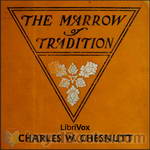 The Marrow of Tradition
The Marrow of Tradition
In The Marrow of Tradition, Charles W. Chesnutt--using the 1898 Wilmington, North Carolina massacre as a backdrop--probes and exposes the raw nerves and internal machinery of racism in the post-Reconstruction-era South; explores how miscegenation, caste, gender and the idea of white supremacy informed Jim Crow laws; and unflinchingly revisits the most brutal of terror tactics, mob lynchings. (Introduction by James K. White) | |
By: A.P. Herbert (1890-1971) | |
|---|---|
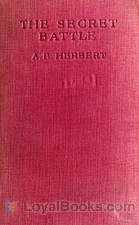 The Secret Battle
The Secret Battle
Like many soldiers at the beginning of their military careers, Harry Penrose has romantic ideas of climbing the ranks and attaining hero status. However, while stationed at Gallipoli, the realities of war begin to take their toll on Penrose, not only physically, but also mentally where the war has become a 'battle of the mind.' This is his story as related by a fellow soldier, as well as the story of the campaign at Gallipoli which is vividly portrayed from the author's own personal experiences.During his tenure as an officer, Penrose slowly asserts himself; the war takes a toll on his personality, but he begins to live up to his early dreams of heroism... | |
By: S. Weir Mitchell (1829-1914) | |
|---|---|
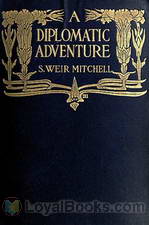 A Diplomatic Adventure
A Diplomatic Adventure
| |
By: Mary Esther Miller MacGregor (1876-1961) | |
|---|---|
 Black-Bearded Barbarian
Black-Bearded Barbarian
A fictionalized biography of George Mackay (1844-1901), an influential Presbyterian missionary in northern Taiwan. | |
By: Basil King (1859-1928) | |
|---|---|
 Wild Olive
Wild Olive
Norrie Ford, having been unfairly convicted of murder, has escaped. A lucky chance finds him being rescued by a mysterious girl (the Wild Olive of the title), who sets him up with a new life under a new name in Argentina. He makes such a success of his time there that he is posted back to New York by the company he works for – but not before he has become engaged to be married. Back in New York, he meets up again with the Wild Olive . . . | |
By: Mary Jane Holmes (1828-1907) | |
|---|---|
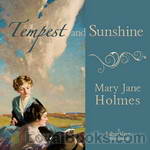 Tempest and Sunshine
Tempest and Sunshine
Tempest and Sunshine is the first book written by Mary Jane Holmes. Set in the pre-Civil War south, it follows the struggles and romances of two sisters, as different as night and day; blonde Fanny and dark haired Julia. (Introduction by jedopi) | |
By: Robert Henry Newell (1836-1901) | |
|---|---|
 The Orpheus C. Kerr Papers
The Orpheus C. Kerr Papers
These are a collection of humorous "letters" written by a fictional character to a relation in the north during the Civil War. They were published regularly in the New York Mercury Sunday newspaper for the four years of the war. In the letters, Newell pokes fun at northern generals, politicians, and has hard things to say about southerners. Although Newell is rarely serious, I imagine the letters reflect the bitterness and frustration of many northerners at the time. (Introduction by Margaret) | |
By: John Fox (1863-1919) | |
|---|---|
 The Little Shepherd of Kingdom Come
The Little Shepherd of Kingdom Come
| |
By: Thomas Dixon, Jr. (1864-1946) | |
|---|---|
 Clansman, An Historical Romance of the Ku Klux Klan
Clansman, An Historical Romance of the Ku Klux Klan
The second book in a trilogy of the Reconstruction era - The Leopard's Spots (1902), The Clansman (1905), and The Traitor (1907), this novel was the basis for the 1915 silent movie classic, "The Birth Of A Nation". Within a fictional story, it records Dixon's understanding of the origins of the first Ku Klux Klan (his uncle was a Grand Titan during Dixon's childhood), recounting why white southerners' began staging vigilante responses to the savage personal insults, political injustices and social cruelties heaped upon them during Reconstruction... | |
By: Thomas Dixon (1864-1946) | |
|---|---|
 The Victim A romance of the Real Jefferson Davis
The Victim A romance of the Real Jefferson Davis
| |
By: Charles Watts Whistler (1856-1913) | |
|---|---|
 Havelok the Dane: A Legend of Old Grimsby and Lincoln
Havelok the Dane: A Legend of Old Grimsby and Lincoln
Troy, Athens, Rome... each has its founding legend. So too does the Lincolnshire town of Grimsby, once the largest fishing port in the world. Havelok the Dane probably derives from a folk-tale, orally passed down before assuming written form - first in Anglo-Norman French, later in Middle English verse (c. 1280-1300). It tells of the rescue of the Danish prince from a wicked regent, who has tried to procure Havelok's murder. Grim the fisher, the appointed hit-man, thwarts the plan by spiriting the lad to England, where Grim settles with his family on the coast, adopting Havelok as his foster-son and naming the new community after himself... | |
By: Hugh Walpole (1884-1941) | |
|---|---|
 Cathedral
Cathedral
Sir Hugh Seymour Walpole, CBE (1884 – 1941) was an English novelist. He was the son of an Anglican clergyman, intended for a career in the church but drawn instead to writing. Among those who encouraged him were the authors Henry James and Arnold Bennett. His skill at scene-setting, vivid plots, and high profile as a lecturer brought him a large readership in the United Kingdom and North America. He was a best-selling author in the 1920s and 1930s, but has been largely neglected since his death... | |
 The Dark Forest
The Dark Forest
| |
By: Stanley John Weyman (1855-1928) | |
|---|---|
 A Gentleman of France
A Gentleman of France
| |
 In Kings' Byways
In Kings' Byways
| |
 The Long Night
The Long Night
| |
By: Emily Sarah Holt (1836-1893) | |
|---|---|
 The White Lady of Hazelwood A Tale of the Fourteenth Century
The White Lady of Hazelwood A Tale of the Fourteenth Century
| |
 Earl Hubert's Daughter The Polishing of the Pearl - A Tale of the 13th Century
Earl Hubert's Daughter The Polishing of the Pearl - A Tale of the 13th Century
| |